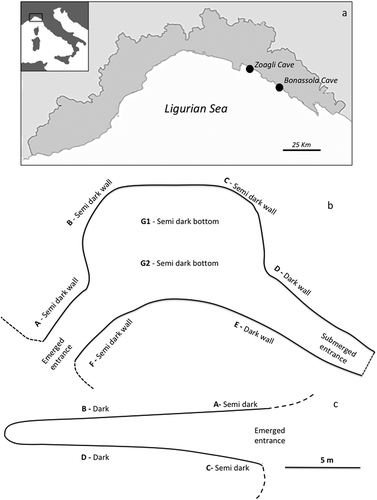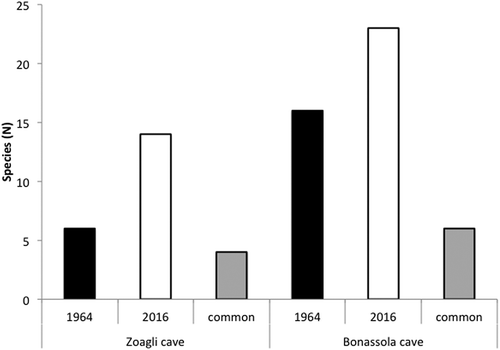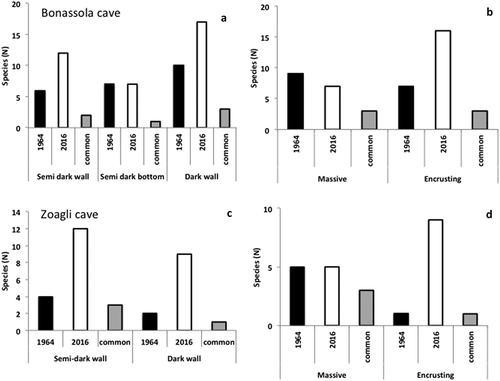Figures & data
Figure 1. (a) Position of the two studied caves along the Ligurian coast. (b, c) Planimetry sketches of Bonassola (b) and Zoagli (c) caves.

Table I. Sponge diversity and abundance in the Bonassola Cave in both considered periods. En, encrusting sponges; Ms, massive sponges.
Table II. Sponge diversity and abundance in the Zoagli Cave in both considered periods. En, encrusting sponges; Ms, massive sponges.
Figure 2. Number of sponge species recorded in the studied caves during both periods. Grey bars represent the species in common between the two periods.

Figure 3. Frequencies of the most abundant sponge species in both caves under different light conditions and positions. The frequency is the percentage presence of a species in the studied standard surface.

Figure 4. (a, c) Number of sponge species recorded in the different zones and in both sampling periods within the two studied caves. (b, d) Number of sponge species in both caves according to different growth patterns and sampling periods.

Figure 5. Aplysina sp. (a) Cushion-shaped specimens joined together by thin, sometimes branching processes. (b) Large encrusting specimens formed by the coalescence of several small sponges. (c) Emerged specimens during a low tide.

